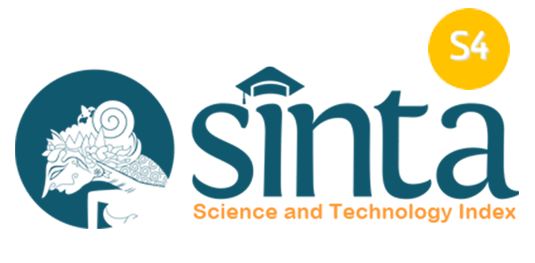Model Bisnis Kewirausahaan Sosial Mandiri Studi Kasus Pada BMT At-Taqwa Da Lpd Mas
Abstract
Penelitian ini dimaksudkan untuk mempelajari model bisnis yang diterapkan oleh pelaku wiarausaha sosial keungan mikro mandiri untuk mencapai nilai ekonomis organisasi dan meningkatkan nilai sosial masyarakat secara bersama-sama. Penelitian ini merupakan penelitian kumulatif explanatory dengan menggunakan metode studi kasus berganda tarhadap dua kasus, yaitu Baitul Maal wa Tamwil (BMT) At-Taqwa di Jakarta dan Lembaga Perkreditan Desa (LPD) Mas di Bali. Penelitian ini menggunakan dua satuan analisis, yaitu Lembaga Keuangan Mikro (LKM) yang menjadi fokus dan masyarakat di sekitar LKM dengan menggunakan satuan analisis berganda (embedded), yaitu customer interface, strategi inti, sumber daya strategic, jaringan nilai LKM,nilai sosial target pasar LKM, dan kinerja keuangan LKM.
Penelitian ini memberikan tujuh kesimpulan. (l) pelaku wirusaha sosial melalui pengaturan fulfillment & support dan relationship dynamic. (2) pelaku wiarausaha social keuangan mikro mandiri menciptakan strategi ni melalui pengaturan visi dan misi,linkup produk/pasar; dan basis diferensiasi. (3) pelaku wiarausaha sosial keuangan mikro mandiri menciptakan sumber daya strategic melalui kompetensi inti, asset strategic, dan proses inti memanfaatkan kompetensi inti dan asset strategic. (4) pelaku wirausaha sosial keuangan mikro mandiri menciptakan jaringan nilai melalui pengaturan jalinan hubungan dengan pemasok, rekan dan koalisi. (5) customer benefis berperan sebagai penghubung komponen customer interface dengan komponen startegi Secara khusus, customer benefis memungkinkan LKM mandiri melaksanakan berbagai hal pada sub komponen - sub komponen dalam komponen customer interface untuk menerapkan strategi inti. (6) konfigurasi aktivitas berperan sebagai penghubung kompenen strategi inti dengan kompenen sumber daya strategik. 7) company boundaries berperan sebagai penghubung kompenen sumber daya strategic dengan jaringan nilai.
kata Kunci : Bisnis, Kewirausahaan Sosiai Mandiri
Full Text:
PDFReferences
Armort, Richard & Joseph E. Stiglitz. (1990) Moral Hazard and Non market Institutions: Diysfunctional Crowding Out or Peer Monitoring. American Economic Review. 81(1), 179-90.
Armendariz de Aghion, B, & Gollier, C. (2000). Peer Monitoring in an Adverse Selection Model. Economic Journal, 110, 632-643.
Ashoka (2001). An Introduction to Microcredit: Why Money is Flowing from The Rich to The Poor. Cahlers du CEREN Working Papers, 21, 77-87.
Auwal, M. A. (1996, Promoting Microcapitalism in the Service of the Poor: The Garmeen Model and its Cross-Cultural Adaptation. The Journal of Business Comunication. 33, 27-49.
Baum, Joel A.C & Cristine Oliver (1991): Institutional Likages and Organizational Mortality. Administrative Sciene Quarterly, 36, 187-218.
Bernasek, A (2003). Banking on Social Change : Grameen Bank Lending to Women. International Journal of Politics, Culture and Society, 369-385.
Berry, A, Rodrigez, E, & Sandee, H. (2000). Small and Medium Enterprise Dynamics in Indonesia. Bulletin of Indonesian Economix Studies, 37 (3), 367-384.
Dougma, S, & Schreuder, H. (2000). Economic Approaches to Organizations. London : Prentice Hall.
Gordjin, J. Akkermans, H, & Vliet, H. V, (2000), Business Modelling is not Process Modelling, ECOMO. Proceedings of ECOMO.
Granovetter, M. (1973). The Strength of Weak Ties. American Journal of Sociology, 78, 1360-1380.
Hamel, G. (2002). Leading the Revolution. New York: A Plume Book.
Huppi, M. & Feder, G. (1990). The World Bank Research Observer, 5 (2), 187-204.
Jarillo, C.J. (1998). On Strategic Networks. Strategic Management Journal, 9, 31-41.
Karduck, S, & Seibel, H. D. (2004). Transaction Costs of Self-Help Groups : A Study of NABARD’s SHG Banking Programme in India. Dipetik December 2, 2008, dari National Bank for Agriculture and Rural Development (NABARD) : www.nabard.org
Leadbeater, C. (1997). The Rise of the Social Entrepreneur, London : Demos.
Levy, B. (1993). Obstacles to Developing Indigenous Small and Medium Enterprises: An Empirical Assessment. The World Bank Economic Review, 7 (1), 65-85.
Linder, J. C, & Cantrell, S. (2000). Changing Business Models: Surveying the Landscape. Accenture.
Mair, J, & Schoen, O. (2005). Social Entrepreneurial Business Models: An Exploratory Study. European Academy of Business Society.
Morewagae, B. S, Scemule, M, & Rempell, H. (1995). Access to Credit for Non-Formal Micro-Enterprises in Botswana. The journal of Development Studies, 31 (3), 481-504.
North, Douglass C. (1994). Economic Performance Through Time. American Economic Review, 14 (3), 359-68.
Oliver, Sristine. (1997). Sustainable Competitive Advatage : Combining Institutional and Resourcer-Bassed Views. Strategic Management Journal, 18 (9), 697-713.
Pateli, A. G. & Giaglis, G. M. (2003). A Framework for Understanding and Analysing Business Models. 16th Bled Ecommerce Conference. (hal. 329-348). Bled.
Peredo, A. A. & Crisman, J. J (2006). Toward a Theory of Community-based Enterprise. Academy of Management Review. 31, 309-328.
Prahalad, C. K. (2004). The Fortune at Bottom of The Pyramid: Eradicating Poverty Through Profits. Upper Saddle River, N.J : Wharton School Publishing.
Ripolles, M, & Blesa, A. (2005). Personal Betworks as Fosters of Entrepreneurial Orientation in New Ventures. International Journal of Entrepreneurship and Innovation, 6 (4), 329-248.
DOI: https://doi.org/10.29313/performa.v8i2.6074
Refbacks
- There are currently no refbacks.
Copyright (c) 2020 Jurnal Manajemen dan Bisnis (Performa)
Jurnal manajemen dan bisnis (Performa) diindeks oleh:
Alamat Redaksi:
Jl. Tamansari 1, Bandung 40116, Jawa Barat, (022) 4203368 pes. 210, (022) 4264064. jmb.performa@gmail.com / jmb.performa@unisba.ac.id

This work is licensed under a Creative Commons Attribution-NonCommercial-ShareAlike 4.0 International License. ISSN 1829-8680 | E-ISSN 2599-0039

_(2).jpg)







